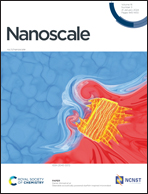Electrochemical impedance spectroscopy, another arrow in the arsenal to study the biodegradability of two-dimensional materials†
Abstract
Carbon nitride (C3N4) is an innovative material with a high potential in many applications including energy storage, catalysis, composites, and biomedicine. C3N4 appears remarkably interesting not only for its properties but also because its simple preparation routes involve low-cost starting materials and reagents. However, there is still a lack of information on its degradability. For this reason, in this study, we evaluate the environmental persistence of C3N4 and its oxidized form by applying the photo-Fenton reaction. The morphological and structural changes of both materials were monitored by transmission electron microscopy and Raman spectroscopy respectively. In addition, electrochemical impedance spectroscopy has been used as an original technique to validate the degradation process of C3N4.

- This article is part of the themed collections: Graphene and 2D Materials in Healthcare and Celebrating International Women’s day 2024: Women in Nanoscience


 Please wait while we load your content...
Please wait while we load your content...